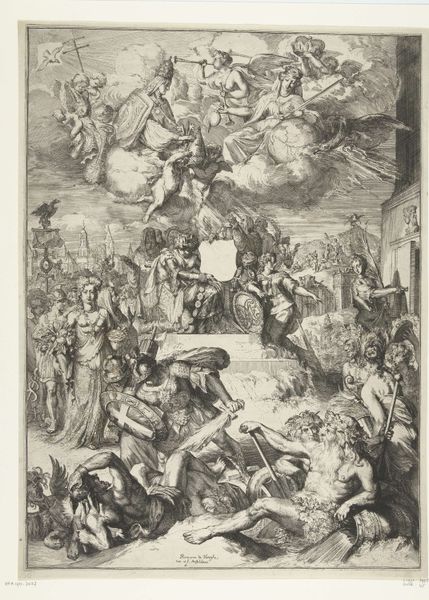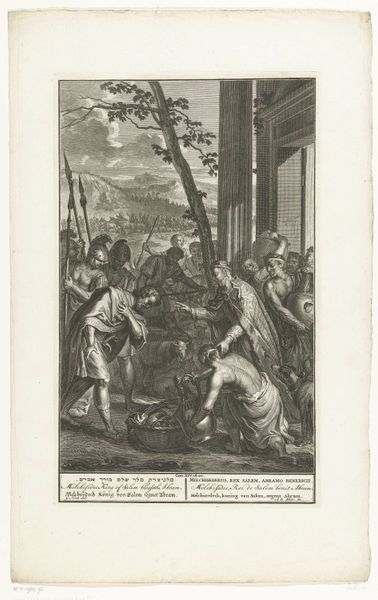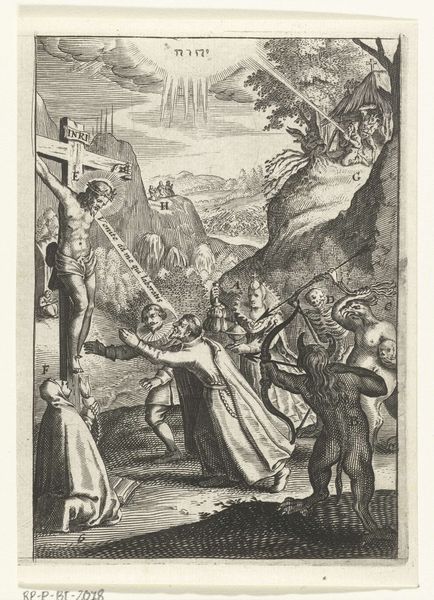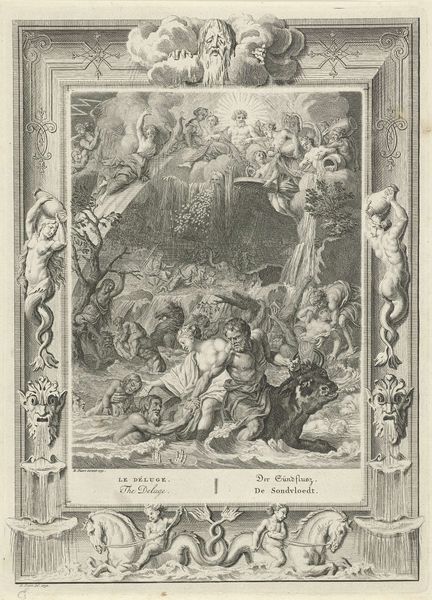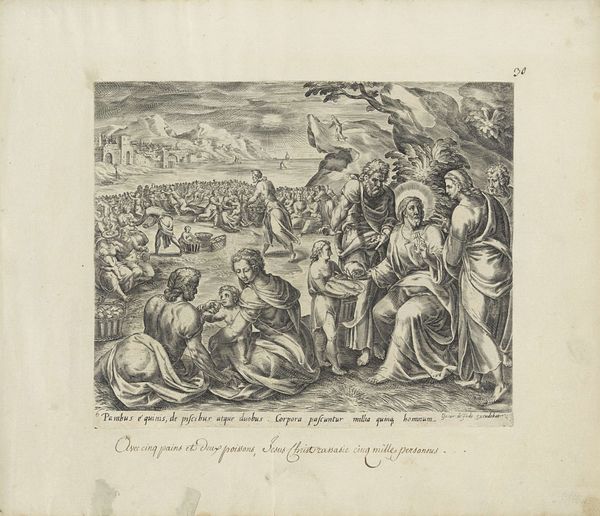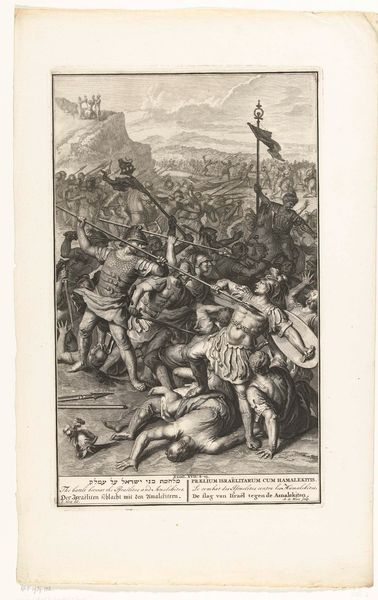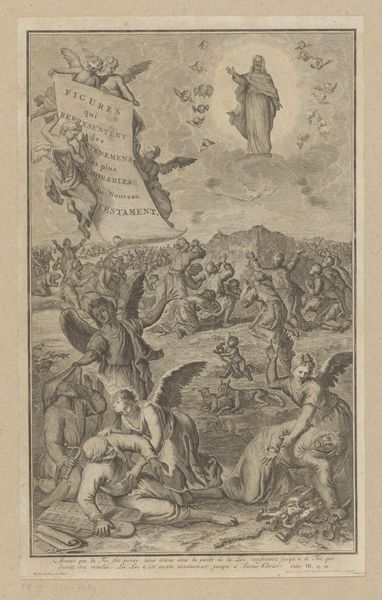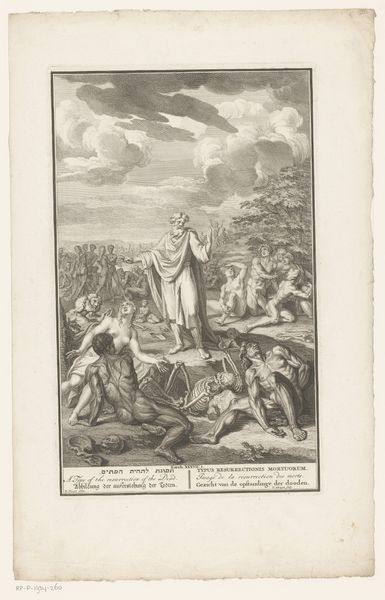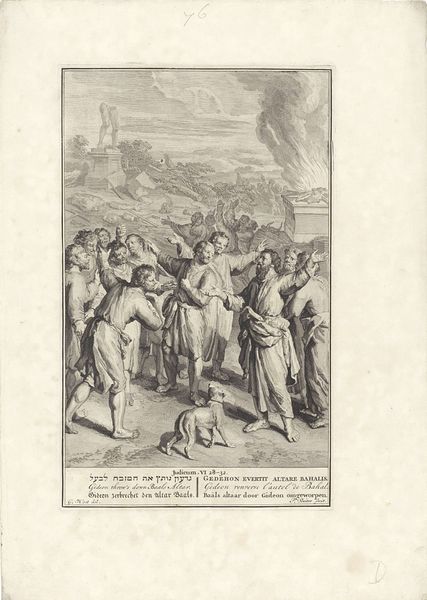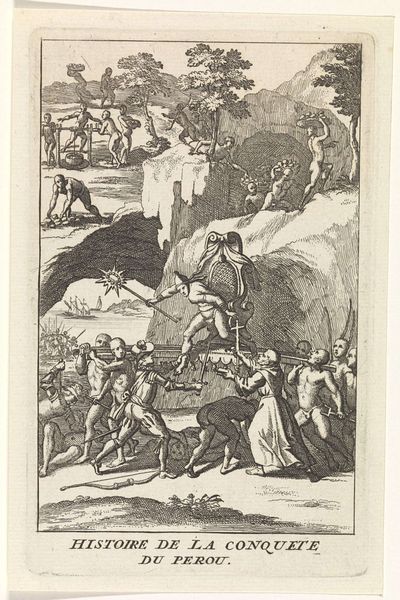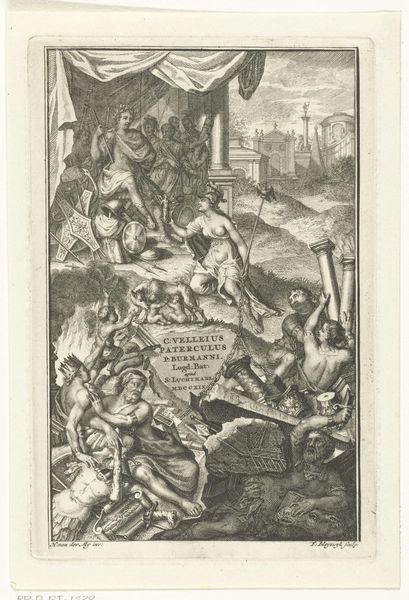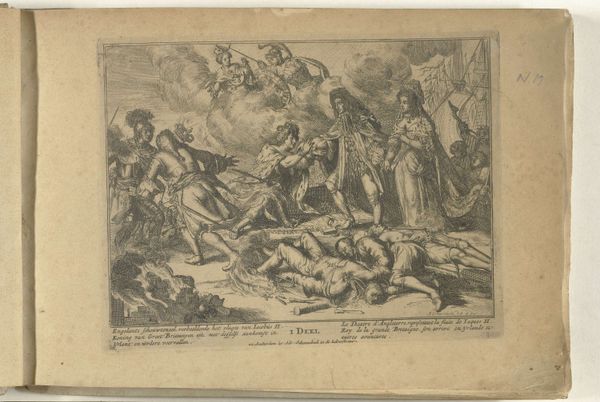
print, engraving
#
narrative-art
#
baroque
# print
#
history-painting
#
engraving
Dimensions: height 358 mm, width 220 mm
Copyright: Rijks Museum: Open Domain
Curator: "Moses Striking Water from the Rock," possibly from 1705 to 1728, by Jan van Vianen. It’s an engraving, currently held here at the Rijksmuseum. Quite the scene, wouldn't you say? Editor: Absolutely. It strikes me as a beautiful, desperate chaos. There's a frantic energy in every line. Curator: It’s quite dynamic, even for Baroque. The artist captures a moment of divine intervention amid earthly suffering, or maybe vice-versa? The engraving portrays the biblical episode where Moses, following God's command, strikes a rock with his staff to bring forth water for the parched Israelites in the desert. Notice how van Vianen uses line to depict the diverse reactions. Editor: I’m fascinated by the cascade of water gushing from the rock; it's like a symbolic cleansing, rebirth almost. Water, of course, holds so many layers. There are ancient beliefs where water represents life but can be destructive when uncontrolled. Also, observe that almost everyone rushes to drink—or to collect this newfound life-giving force, but why are the cups are so small, are they being ironic here? Curator: Perhaps Van Vianen's point wasn't to make us believe we will all have enough to quench our thirsts. Given that van Vianen created this image using the engraving medium, the dramatic tension he creates makes you consider a world lacking color, depth and tonal subtleties. This medium brings forward the graphic impact— the symbolism must then emerge from line, form and content! Editor: I agree, the Baroque flair for drama is very apparent. But this image—the surge of humanity and desperation it portrays is deeply moving and connects to some very ancient parts of our shared past. Even now, thinking about water scarcity brings this piece into stark contemporary relief. The people fighting to catch water; so emotional and desperate that is seems deeply realistic. Curator: Indeed. A timeless visual expression, a symbolic dance around survival, echoing across centuries. I find that so poignant, so relevant to where we stand today. Editor: Yes, and in terms of the use of allegory it suggests a profound intersection. Not just with theological doctrine and art, but it also underscores the inherent value of collective memory— the importance of art itself!
Comments
No comments
Be the first to comment and join the conversation on the ultimate creative platform.
